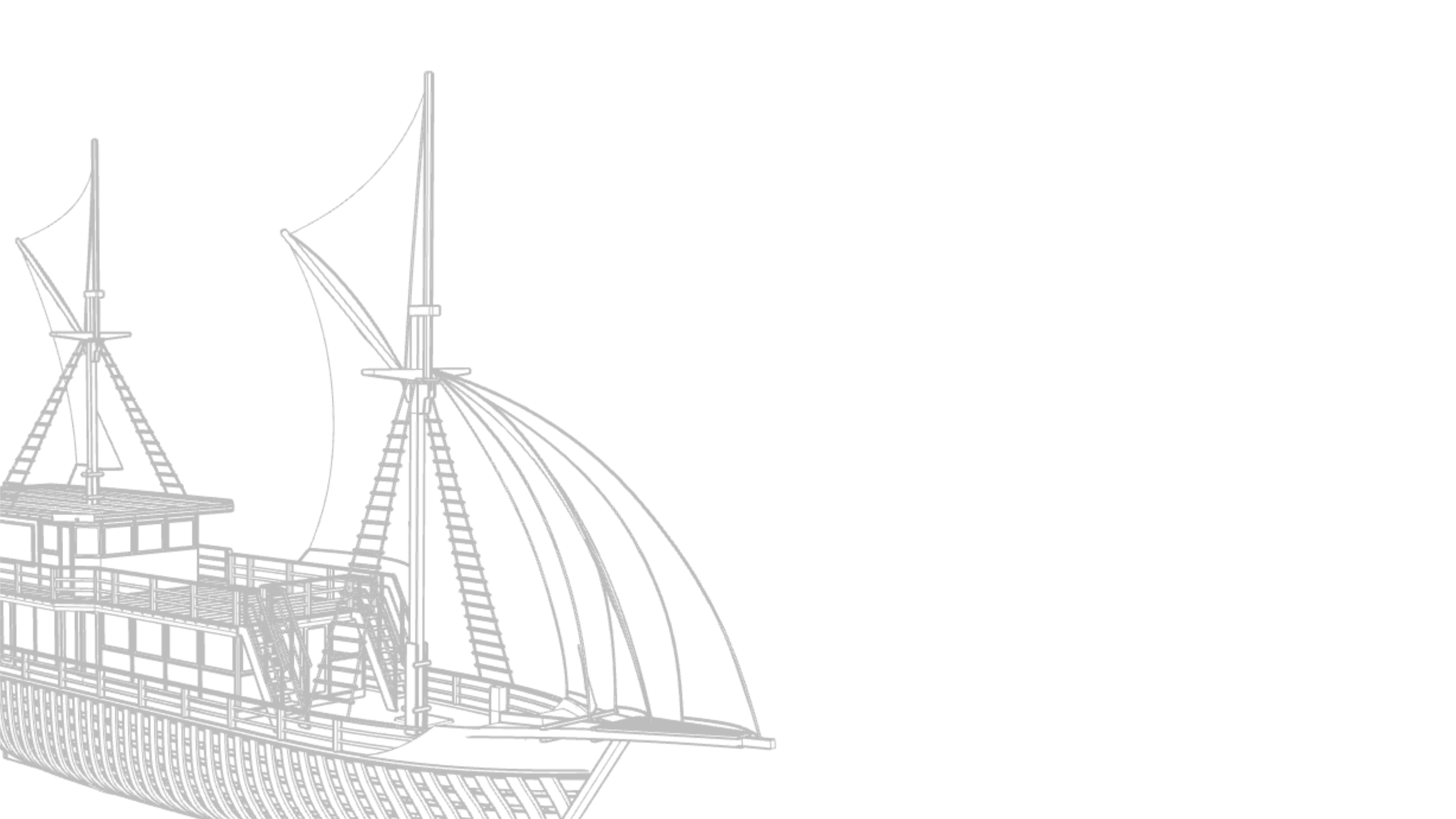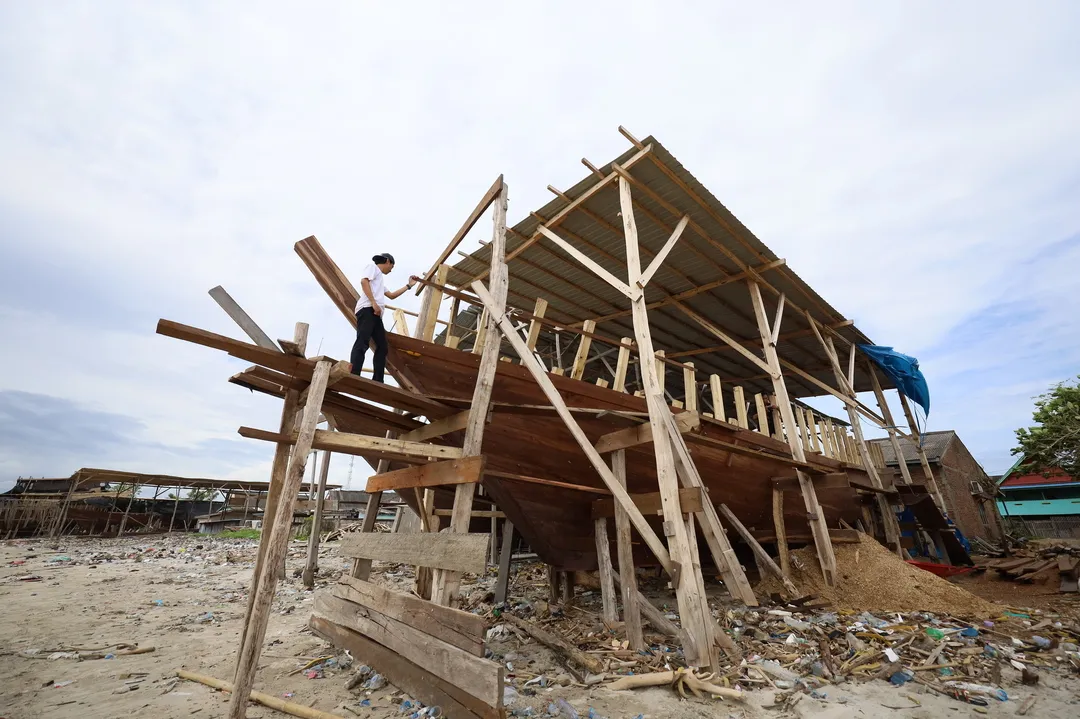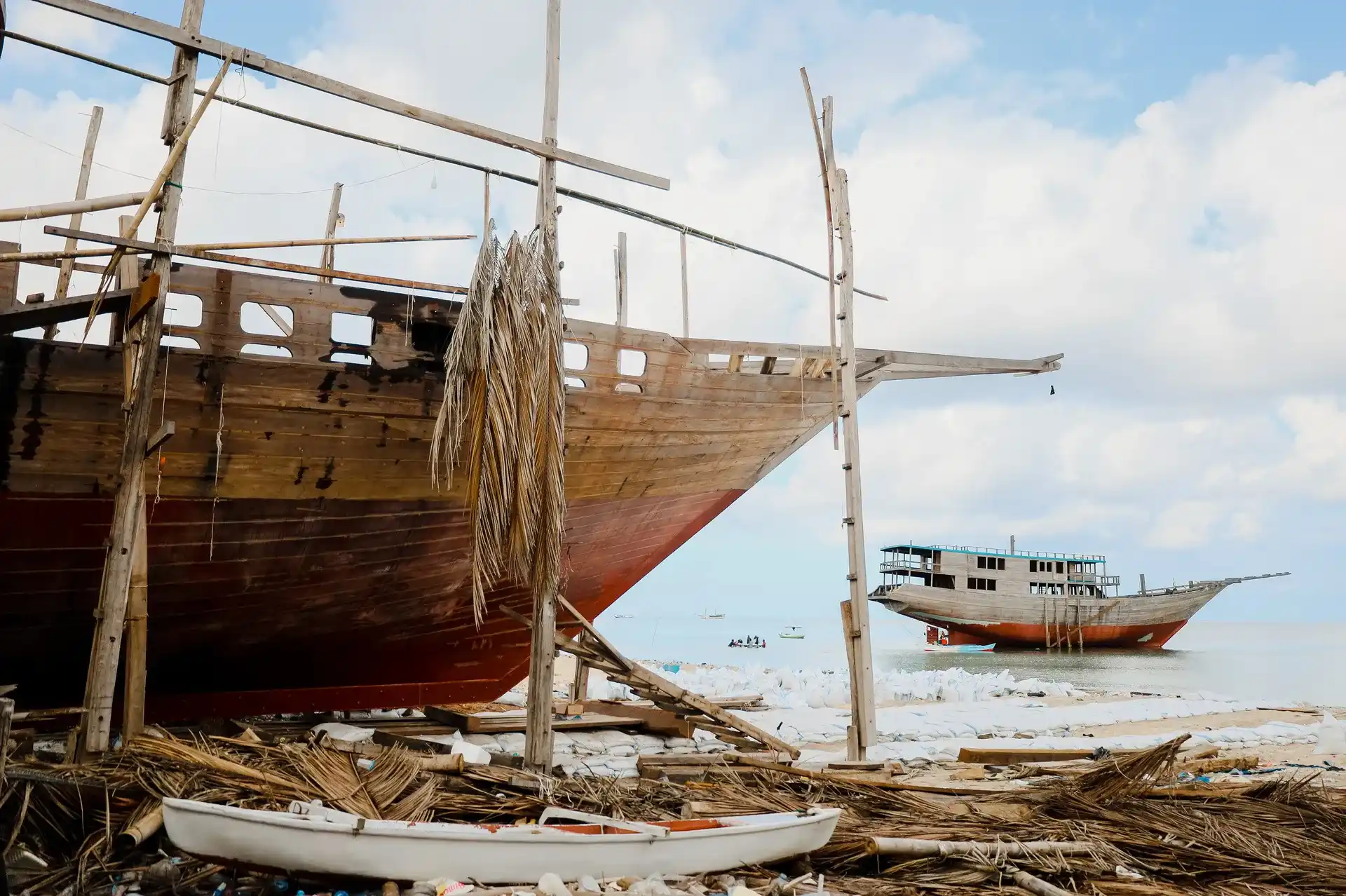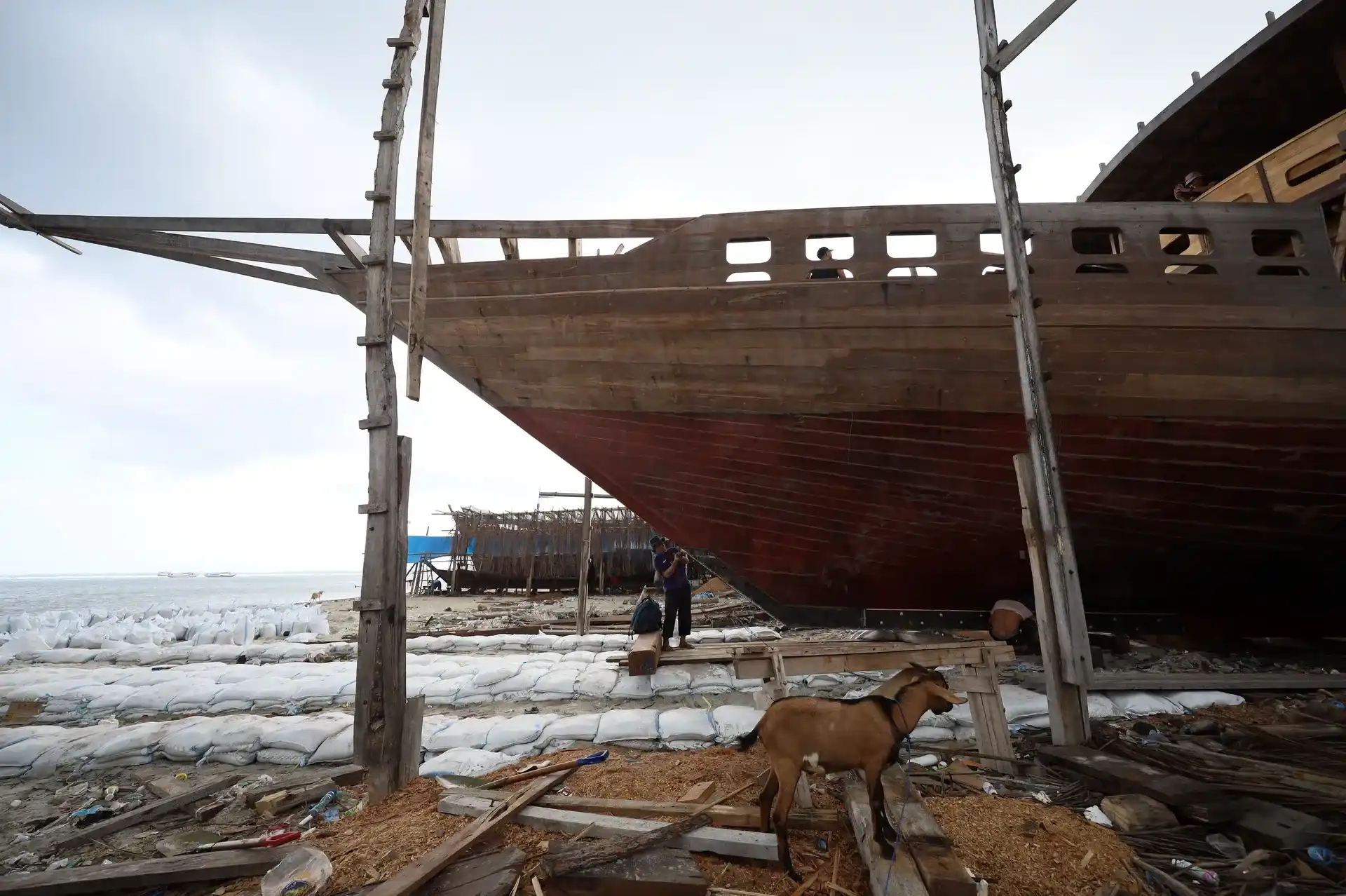How Long to Build a Phinisi? Inside Indonesia’s Timeless Craft
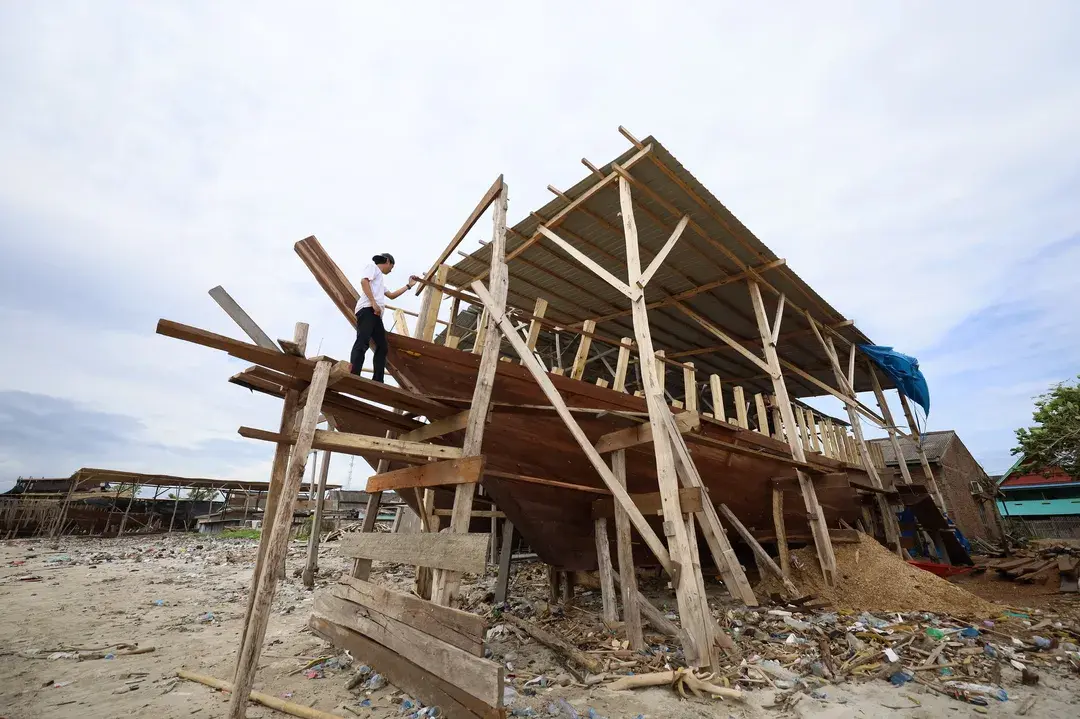
How long to build a Phinisi depends on more than labor—it’s about tradition, patience, weather, and deep cultural respect. Each ship is shaped not just by tools, but by ceremonies, ancestral memory, and the rhythm of the sea. In Bulukumba, time becomes part of the craft itself.
So, how long does it truly take to build one of Indonesia’s most iconic vessels? Let’s explore.
How Many Months Does It Take to Build a Phinisi?
Building a Phinisi isn’t measured in days or deadlines—it’s measured in rhythm, tradition, and nature’s cooperation. While modern shipyards may rush construction, traditional boatbuilders in Bulukumba follow a deeper, slower pace rooted in ancestral wisdom.
1. Small Phinisi (20–25 meters)
Estimated time: 6 to 8 months
This includes sourcing quality timber, preparing the keel, and building the hull, deck, masts, and interiors. Even for smaller vessels, craftsmanship is meticulous—nothing is rushed.
2. Large Phinisi (30+ meters)
Estimated time: 12 to 24 months or more
Larger vessels require more materials, skilled labor, and extended rituals. Builders often pause for ceremonies, tide shifts, or to wait for specific timber shipments. Some custom luxury Phinisi even take up to 3 years to complete.
Read Also: The History of Phinisi Boats from Bulukumba: Indonesia’s Timeless Sail
Influencing factors:
- Availability of Wood: Rare hardwoods like ironwood and teak must be ethically sourced and dried—sometimes taking months before use.
- Climate & Tides: Bulukumba’s shipyards work with the weather, often pausing in heavy rains or high tide seasons.
- Crew Size & Specialization: A well-trained team speeds up the process, but traditional builders often work with smaller, familial crews.
- Rituals & Cultural Pauses: Sacred ceremonies such as keel-laying, sea offerings, and taboos are observed throughout—timing cannot be rushed.
Why Does It Take So Long to Build a Traditional Phinisi?
Building a Phinisi isn’t just carpentry—it’s cultural devotion. The process reflects the patience, spiritual reverence, and inherited skill of the boatbuilders. Every stage is tied to nature’s timing and ancestral rhythm. Here are the reasons:
1. It’s Built by Hand, Not Machines
Traditional builders rely on hand tools—adzes, chisels, and saws—not factory automation. Each plank is shaped, joined, and sealed manually, preserving the quality and spirit of the vessel.
2. Timber Must Be Seasoned Naturally
Woods like ironwood and teak can’t be rushed. They must be dried over weeks or months to prevent warping, cracks, or water damage at sea. Improperly cured wood means a shorter lifespan for the boat.
3. Rituals Shape the Pace
From keel laying to final launch, each step is tied to ceremonies. Offerings, moon phases, and ancestral blessings guide the process. Builders pause work for taboos, storms, or cultural reasons out of deep respect.
4. Design Happens in the Mind, Not on Paper
There are no blueprints. Instead, the master builder uses memory, intuition, and oral tradition. This careful “mind-mapping” means decisions are made slowly, with precision passed down over generations.
5. Every Boat Is Unique
Phinisi are not mass-produced—they’re crafted individually, each with its own character and detail. This artistry takes time, especially when decorative carvings and custom interiors are added.
Step-by-Step Phinisi Construction Timeline
Building a Phinisi is not just about assembling parts—it’s a carefully timed process influenced by nature, culture, and craftsmanship. Here's a breakdown of how the months unfold during traditional construction:
1. Month 1–2: Timber Selection, Drying & Keel Laying Ceremony
- Builders begin by sourcing high-quality woods like ironwood, teak, or bitti.
- Timber is left to season naturally, a process that prevents warping and ensures seaworthiness.
- The keel-laying ceremony marks the spiritual birth of the ship—offerings are made, prayers are said, and work begins under community guidance.
2. Month 3–5: Frame Building and Hull Shaping
- The boat’s skeleton (frame) is assembled using oral tradition and builder intuition—no blueprints.
- Planks are manually cut and curved to form the hull, with joints secured by wooden dowels, not nails.
- This phase is labor-intensive, requiring skilled teamwork and constant adjustment.
3. Month 6–8: Decks, Cabins, and Detailing
- The upper structure takes form: main deck, crew quarters, and interior detailing.
- Decorative elements may be added—hand-carved railings, symbolic motifs, and traditional touches.
- Some builders begin waterproofing the hull with natural resins or oils.
4. Month 9+: Mast, Sail Installation, and Launch Ritual
- The two towering masts are erected, and the sails—often custom-made—are hoisted.
- Final caulking ensures the boat is watertight. The vessel undergoes inspection by elders or senior craftsmen.
- A launch ceremony gathers the community to bless the ship and send it to sea with song, food, and shared prayers.
Read Also: How Indonesia’s Traditional Boat Builders Are Preserving Culture
Who Builds a Phinisi?
Traditional Phinisi ships are built by highly skilled artisan communities, particularly in Bulukumba and Tana Beru, South Sulawesi—considered the spiritual and cultural home of this maritime craft. Here who makes Phinisi:
- Master boatbuilders, known locally as Panrita Lopi, lead the entire process. They carry decades of experience passed down through oral tradition—not formal training or written plans.
- Each ship involves a collaborative crew with defined roles:
- Framesmiths construct the boat’s skeletal structure.
- Joiners handle precise connections using wooden dowels.
- Carvers add decorative and symbolic details to the hull and stern.
- Riggers prepare masts, sails, and all final sailing elements.
How Many People Are Involved in Building a Phinisi?
The construction of a traditional Phinisi involves a coordinated team effort, typically ranging from 15 to 30 people, depending on the vessel’s size and complexity. Here are their respective roles:
- Master Boatbuilder (Panrita Lopi): The lead craftsman who guides the entire process using experience and oral tradition—no blueprints involved.
- Timber Specialists: Responsible for sourcing, preparing, and shaping key materials like ironwood or teak.
- Framesmiths & Hull Builders: Assemble the keel, ribs, and hull—shaping the boat’s body with precision.
- Joiners & Carvers: Handle fine details like joints, decorative carvings, and interior elements.
- Riggers & Sailmakers: Install the masts, rigging, and sails during the final stages.
- Ceremonial Elders: Lead rituals such as the keel-laying and launching ceremonies, which are integral to the build.
Cultural Time: Why the Process Isn’t Rushed
Building a Phinisi is not just a construction project—it’s a sacred process woven with meaning, rituals, and respect for tradition. Here’s why time is treated differently in traditional shipbuilding:
1. Ceremonies for Keel-Laying, Mast-Raising, and Launching
Each major phase of construction is marked by a ceremony. For example, the keel-laying (called mappalette bola) involves prayers, offerings, and blessings from elders to invite protection and good fortune.
Similar rites are held during the raising of the masts and the final launch, turning each moment into a communal and spiritual milestone.
2. Observance of Taboos and Auspicious Days
Builders avoid working on inauspicious days determined by traditional calendars.
Certain actions—like cutting specific woods or raising sails—must align with favorable tides, moon phases, and spiritual timings.
If conditions aren't right, work is paused, no matter the deadline.
3. Building is Seen as a Spiritual Act, Not Just Craftsmanship
The boat is treated almost like a living being—its creation is a form of storytelling, community identity, and respect for ancestors.
Rushing the process is believed to invite misfortune or dishonor the spirit of the sea (ome’ na lino in Bugis cosmology).
Read Also: How Wooden Boats Are Made in Indonesia: A Step-by-Step Look at a Living Tradition
Time Is the Soul of the Ship
Building a Phinisi isn’t about speed—it’s about honoring every phase as a sacred step. From the first timber laid to the final sail raised, the process is a ceremony of craft, culture, and connection. Time is not wasted; it’s invested in meaning. Want to see it for yourself?
Witness Every Stage of Boat Construction at Riara Marine
If Voyagers are looking for more than just a cultural stop, this is your chance to experience Indonesia’s living maritime heritage up close. At Riara Marine in Bulukumba, you don’t just observe—you connect, learn, and take part.
- See real builders at work using centuries-old techniques
- Learn how months of skill and spirit turn raw timber into seaworthy legacy
- Explore the full Boat Construction process from start to sail
Spots are limited—book your tour now and sail into living history.
